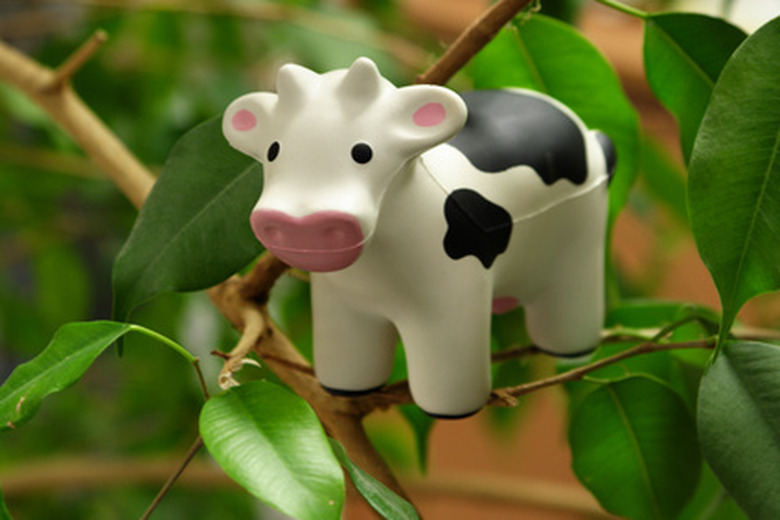How To Identify A Rubber House Plant
The rubber tree plant (Ficus elastica) is a common houseplant in the United States. It is rarely seen growing outdoors, except in the extreme southern portions of the country, due to its intolerance of freezing temperatures. In its native habitat, the jungles of South America, a rubber tree can grow to 100 feet tall. As a houseplant it can become rangy; it needs occasional pruning to promote bushy and attractive growth.
Step 1
Look at the size and shape of the leaves. The leaves of a rubber tree houseplant range from 6 to 12 inches in length and have an elongated oval shape.
Step 2
Notice the color of the leaves. The leaves of a rubber tree houseplant are smooth and dark green on top, and the bottom of the leaves are either gray or burgundy, depending on the variety of plant.
- The rubber tree plant (Ficus elastica) is a common houseplant in the United States.
- The leaves of a rubber tree houseplant are smooth and dark green on top, and the bottom of the leaves are either gray or burgundy, depending on the variety of plant.
Step 3
Observe how the leaves are arranged on the stems. Rubber tree plant leaves grow from the stems in an alternate pattern rather than two leaves growing from each side of the stem in the same location.
Step 4
Snap off a leaf from the plant in an area where removal of the leaf will not be noticed. Simply grab the leaf and gently push down on it until it snaps off the plant. If the plant is a rubber tree it will immediately begin to "bleed" a white non-toxic latex material from the area where the leaf was removed. This will not harm the plant and the plant will heal shortly and recover.
Prune A Rubber Plant
Remove dirt from a pair of pruning shears. Sanitize the pruning shears by wiping them with rubbing alcohol, household disinfectant or a mixture of one part bleach to three parts water. Remove growth that appears weak or damaged. Remove multiple trunks when the plant is young if you prefer a tree with one strong trunk. Make the cuts just above a leaf node, which is the point where a leaf grows, or has grown, from a stem.
- Observe how the leaves are arranged on the stems.
- Remove multiple trunks when the plant is young if you prefer a tree with one strong trunk.
References
- IFAS: Ficus elastica: Rubber Tree
- University of Minnesota Extension: Rubber Trees, Weeping Figs and Other Friendly Ficus
- Arizona State University Extension: Ficus Elastica
- The New Sunset Western Garden Book; Kathleen Norris Brenzel, ed.
- University of Florida IFAS Extension: Disinfecting Pruning Tools
